Heather MacLeod on the Wapusk Youth Camp
Wapusk National Park
There are few tests of character greater than roughing it in the wilderness, and in its 15-year history, the Wapusk Youth Camp has built its share of strong leaders.
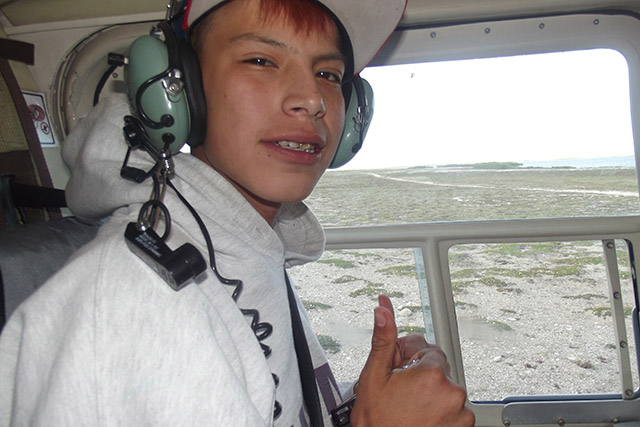
Started in 2008 as the Wapusk Leadership Camp, the program was designed to help young people learn new skills, have new experiences and meet new people, said Heather MacLeod, one of the camp leaders who now serves as the Visitor Experience Manager for Manitoba North, which includes Wapusk National Park.
“It was meant to be a camp where students would foster leadership, stewardship and confidence so they could go back to their respective communities … and talk about the park and get other students interested in Parks Canada and Wapusk National Park,” she said.
The original plan was to bring students in grades 10 and 11 from nearby communities such as Churchill, York Factory First Nation and Fox Lake Cree Nation. However, those parameters expanded, and the inaugural edition welcomed five interested students from Churchill in grades 7 and 8.
Ultimately, positive word of mouth began to spread about the camp, which helped build trust in an adventurous and ambitious program and generated heightened interest in future years.
“It took a couple of years for this to catch on within the community, but very quickly, people recognized that it was a great program,” Heather said. “Information starts trickling into communities and more people are apt to get on board.”
The itinerary
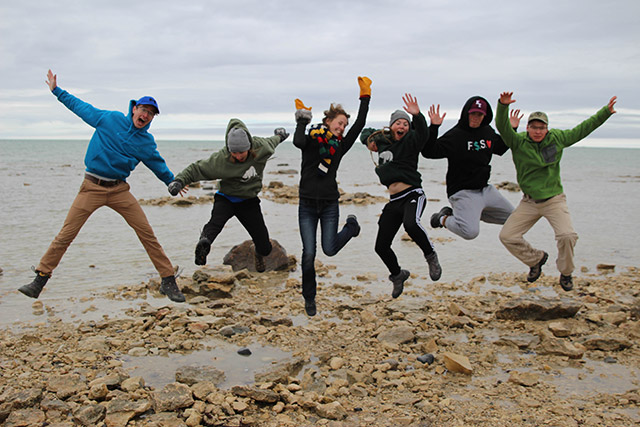
What exactly happens during the five days of the camp?
Firstly, there are several travel- and tourism-related activities, including a helicopter ride, whale-watching trip and tours of the Parks Canada Visitor Centre, Prince of Wales Fort and the Sayisi Dene Village near Churchill. Additionally, there are lessons about the history of the park’s development, a clean-up of the Sloop Cove hike route, and — what’s often cited as participants’ favourite day, according to Heather — the “Epic Hike” to Hudson Bay.
The roughly 12-kilometre trek from Nester One research camp up to the bay is a day filled with wonder as participants check out a hunting complex at the halfway point, encounter caribou, and spot everything from polar bear daybeds and tracks to tent rings to various flora and fauna. These sightings lend the opportunity to discuss topics such as the land’s history as a travel corridor for caribou and humans, Indigenous land use and Hudson’s Bay Company history.
Apart from the remote surroundings, other fresh parts of the experience for students are that it often marks the furthest distance they’ve walked as well as being a chance to disconnect from cellular service, which they come to appreciate.
Reflections
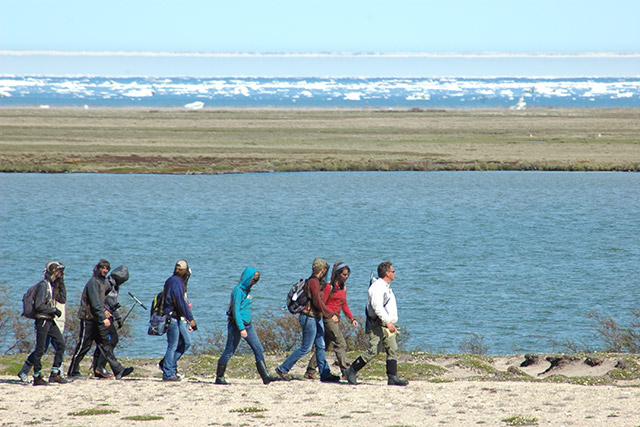
Throughout the years, there have been multiple ways that the students have looked back on what they just experienced.
In the early days, the camp culminated with the participants presenting to friends, family, Parks Canada employees, Wapusk Management Board members and others in Churchill.
“They were then tasked with taking the group presentation and adapting it for presentation in their home community,” Heather explained, noting the audience could be a single person or a group. In return, the student would receive a reference letter from the camp facilitators.
Incorporating the presentation into the camp experience enabled participants to build skills ranging from how to use a GPS to public speaking and building an effective PowerPoint presentation.
As the camp evolved into a high school credit course, the final project shifted into a written Visitor Experience report with each participant being assigned a specific element of the Epic Hike.
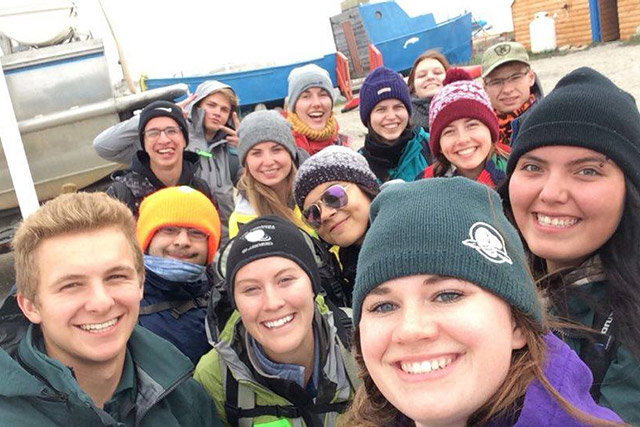
“Some of them would look at safety – what are some of the safety considerations that we have to be thinking of for group dynamics? We’re going to do a polar bear safety briefing and we’re going to do check-ins regularly and see how we’re doing,” Heather said. “Someone else is going to look at logistics — what gear do we need to take? We need first aid; everyone needs water, and we need food.”
While the camp boasts a healthy dose of curriculum-relevant activity during the day, there are still many more opportunities to build social connections and practical life skills outside of the prescribed agenda.
Mealtimes, for example, provide an opportunity for connecting with students on a personal level, Heather explained. But it can be a chance for new experiences: for some, it’s the first time they’ve prepared a salad or washed a dish. Evenings usually take the shape of game nights and campfires.
“I love sitting around the campfire listening to the stories the students are bringing to the table,” Heather said.
Student impact
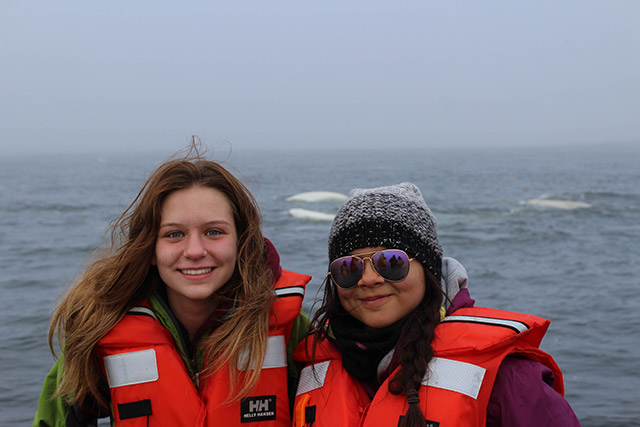
Over the years, the camp has seen changes beyond the wrap-up assignment.
One of the most significant changes has been in terms of external organizations providing support to the program. In 2018, Parks Canada connected with the Frontier School Division (FSD) to incorporate the camp into its schools’ technical vocational programming. Students complete four months of classroom work and then one month of practical experience in their chosen field. In this case, the camp welcomes students pursuing outdoor education.
The Wapusk interpretation coordinator and teacher collaborate on curriculum, “with the culminating activity being going into the park,” Heather explained.
“Although it became a much longer commitment because it’s a month-long program, it was a lot less heavy in man hours,” she said.
The program with FSD will run in even-numbered years, with odd-numbered years welcoming youth from Seal River Watershed Initiative communities such as Tadoule Lake and Lac Brochet and collaborating on programming with Indigenous facilitators. This year, the hope is to welcome participants from Fox Lake Cree Nation and York Factory First Nation, with an expanded reach to Inuit communities in the Kivalliq region in future years.
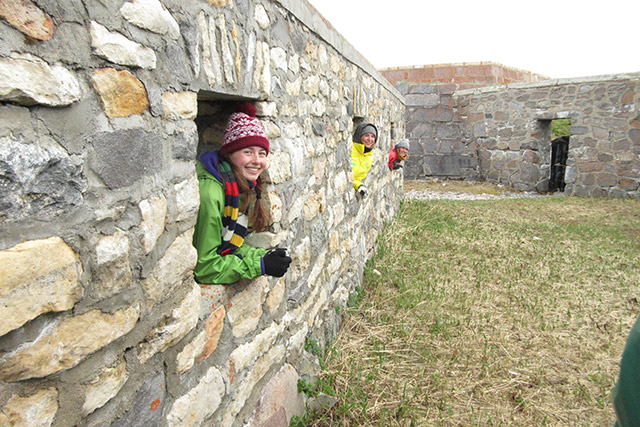
© Ryley Livingston
For many participants, the trip marks the furthest they’ve travelled from their community. It’s a significant journey, as they fly into Thompson or Winnipeg before catching a connecting flight to Churchill. It’s also often the longest they’ve been away from home, with homesickness setting it quite quickly for some of the students. Still, they persevere and gain plenty from the new experience.
“Some participants from remote Northern communities may not have many opportunities to visit other communities within the province. They can be concerned about being in new places because they don’t know everyone, they don’t have family close,” Heather said. “It’s a really great opportunity for participants to see how successful they can be outside of the comfort zone of home communities.”
With a diverse range of students coming from all over northern Manitoba, the takeaways can vary quite significantly. For some, their career trajectory seems to shift over the week as they find a passion for the types of work the camp presents.
Some participants have come back to work for Parks Canada in Churchill and at Lower Fort Garry National Historic Site in roles as varied as Assets, Resource Conservation and Visitor Experience.
For others, the realization that they could venture so far outside of their comfort zone and thrive is something they can draw on for any number of pursuits in the future.
“For some of the participants, that is the biggest shift in their outlook on life that they’ve had. We’ve had students say, ‘If I can challenge myself and be successful, what else could I do?’” Heather recalled. “’I’ve made new friends and it was scary, but I did it and I’m OK.’
“You get that kind of feedback from students, and I think that’s almost more impactful, really: they can see themselves being successful beyond what they had imagined before they arrived.”
- Date modified :